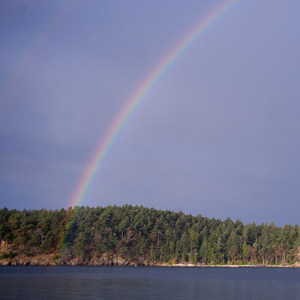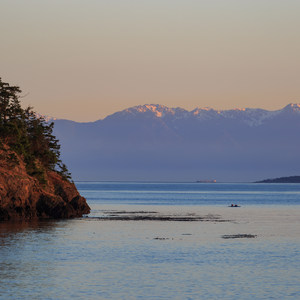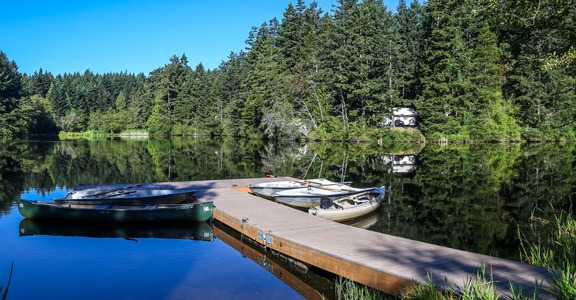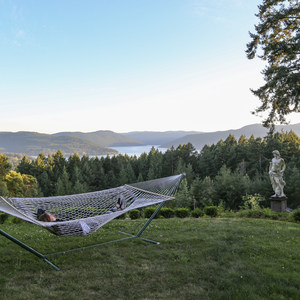San Juan Island National Historic Park stands as a testament that two nations can work together peacefully to resolve their differences. Its two locations on the island also happen to provide some of the most scenic views in the area. So, if you're interested in learning some unique and profound history while checking out some amazing views, whale watching vistas and some of the only hiking trails on the island, visit this amazing park in the San Juan Islands.
The border between the U.S. and Canada was originally established in 1846 along the 49th parallel, which intersected the islands, holding the actual border in dispute. Citizens from both the United States and Great Britain (which was governing Canada at the time) resided on San Juan Island, which was ideal for sheep and pig farms due to its rich soil. In 1859, an American shot and killed a British-owned pig. This quickly sparked a military response from both countries. Three warships and 500 troops were eventually dispatched to the island from both sides. With a battle imminent, it was decided that a peaceful resolution had to be found, and therefore a joint occupation of the island would be a temporary solution. The Civil War then occurred, putting this issue on the back burner, causing the joint occupation to last 12 years. Governments sought resolution through arbitration, and a request was submitted to the emperor of Germany. The resolution was that the border between the two countries would be the Haro Strait, west of the island. The British soldiers left their camp peacefully, but only after chopping down their flag pole. In 1998, the British replaced the flag pole with a modern, 90-foot fiberglass pole in an act of additional peace. The United States and Canada now share the longest unfortified border in the world, and today the park stands as evidence that two countries can work together peacefully to resolve significant issues.
Today, original structures of both the American and British camps stand on opposite ends of the island. These camps are well-maintained and preserved. Knowledgeable park staff are outwardly available as resources during your visit. These two areas of the park are quite different and worth exploring. English Camp resides in a dense forest of madrona and Garry oak trees on the edge of Garrison Bay. A short, strenuous hike up nearby Young Hill will give you a grand overlook of the camp, Garrison Bay, and the surrounding bays. The American Camp is significantly larger in size and boasts open prairies, beaches, bays, tall bluffs, whale watching vistas and a lighthouse.
A significant network of trails also exists on the American Camp end of the island. Strolling across the open prairies on these trails is worthwhile as most of them tend to have views of the Strait of Jaun De Fuca, and orcas can be seen in the right conditions. Grandmas Cove has a small beach nestled away among some bluffs. Continue across the grasslands, admiring the various species of wildflowers in the spring and early summer, and follow the South Beach Trail to one of the longest public beaches on the island. Cattle Point Road rises high above the water offering panoramic, unobstructed views of the Strait of Juan De Fuca and the distant Olympic Mountains. This is an excellent vantage point to spot whales and other wildlife such as red foxes (which are numerous on the island). Continue on to Cattle Point Lighthouse, which is technically outside the park's border.
Visitors to San Juan Island typically come to escape busy lives. The island has a culture of rest and relaxation. One will not typically find a lot of crowds. Visiting the two areas of this park is a perfect way to experience the island. The variety of activities and amount of history that can be absorbed reflects the culture of the island perfectly.
































Comments
Sign In and share them.